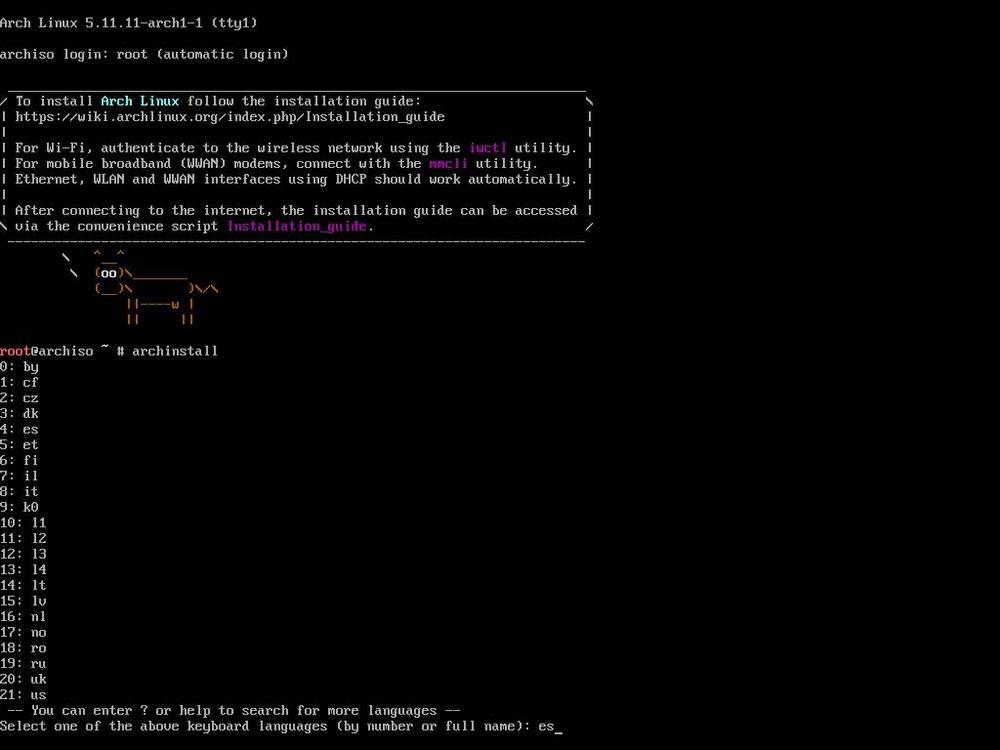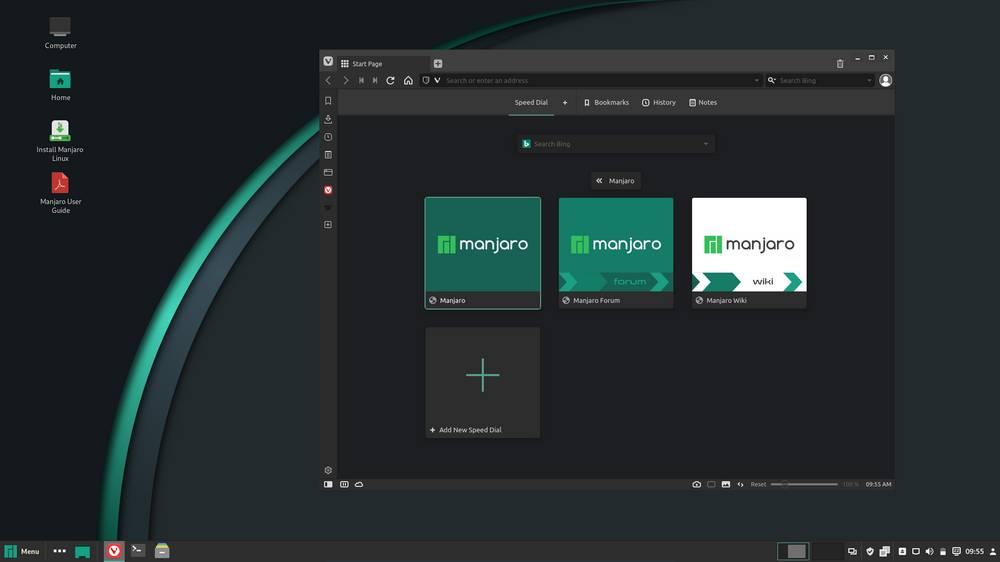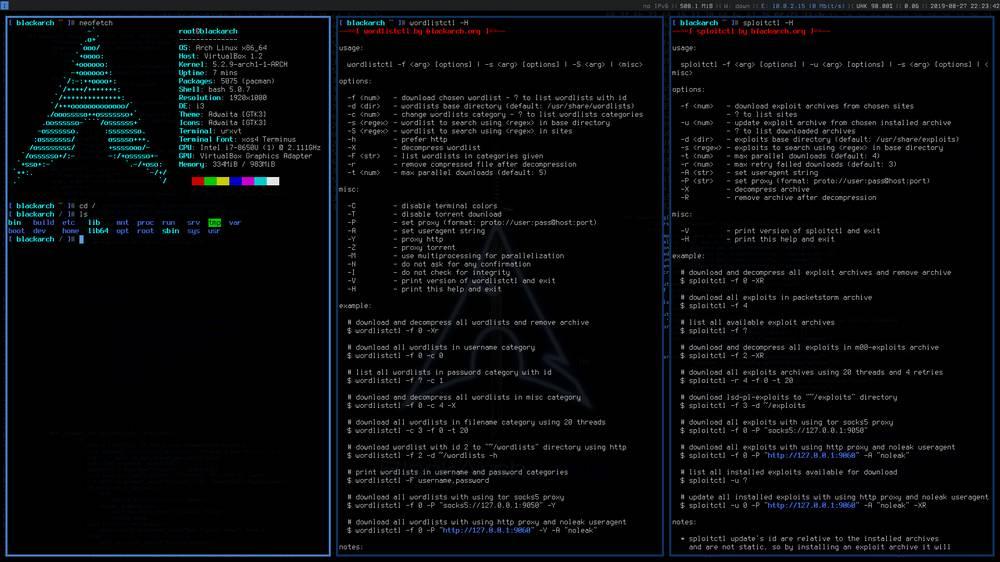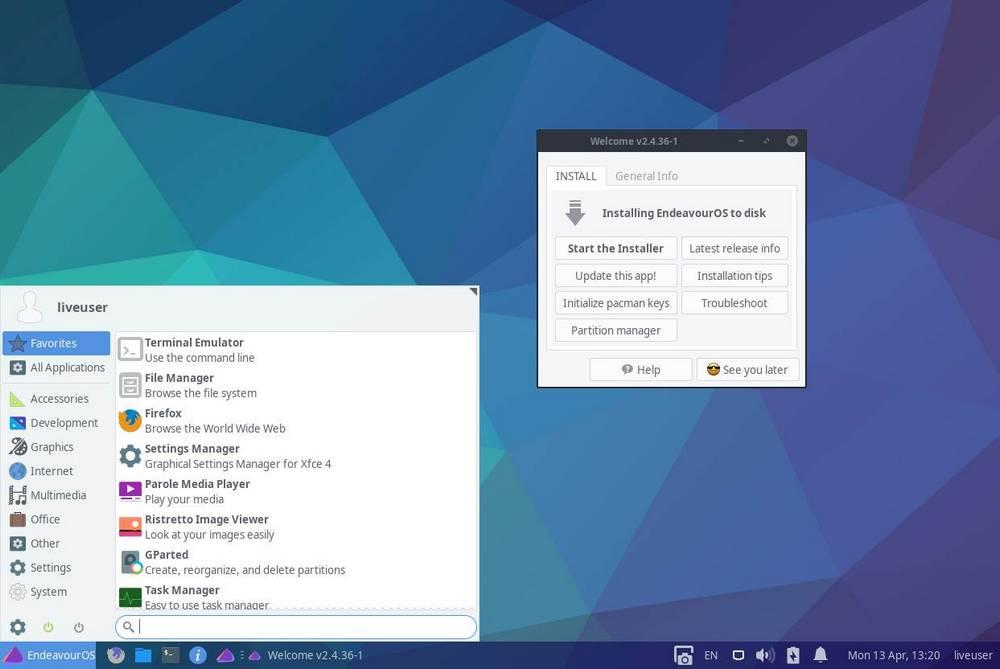One of the most outstanding aspects of Linux is the wide variety of distributions that we can choose from. Within this ecosystem we can find the best known distros, such as Ubuntu, Debian or Arch. In addition, it also has a wide variety of distributions, generally based on these (and others). These seek to improve the user experience and will allow us to obtain an improved, different user experience, whether betting on ease or minimalism.
Arch Linux, within being one of the most important distros, is one of the least known. This stands out for being a minimalist distro, fully customizable. Unlike other systems, which come with a large number of preconfigured packages and programs, Arch allows the user to choose what he wants or does not want to install. It is a system very faithful to the KISS philosophy so characteristic of Linux, a distro, not suitable for inexperienced users. This not only offers the possibility of customizing down to the smallest detail of the system, but it also offers us the best security and stability seen in an operating system.

If you like the concept of Arch Linux, but do not want such a complicated and advanced system, then we leave you what we consider to be the best distributions based on it.
ManjaroLinux

This distro is one of the best-known alternatives to Arch that we can find. This system focuses on reducing the difficulty curve of this distro without losing its essence, starting with the installation process. To begin with, it has an installer based on Calamares that makes it possible for any user, even without much knowledge of Linux, to install it and start it up without much trouble.
We can find Manjaro out of the box with 3 different desktops: KDE Plasma, GNOME and XFCE. However, if we want to use a different desktop, it is also possible to find versions created by the community adapted to use other lesser known desktops, such as i3, bspwn or Budgie, among others.
If you want to give this alternative to Arch Linux a chance, from its website you can download manjaro for free.
BlackArch

With BlackArch we go from one extreme to the other. While Manjaro is an accessible distro for any user who has not had previous experience with advanced Linux systems, BlackArch seeks to offer users an advanced, or most complete distro possible, focused on computer security.
This distro is Arch’s Kali Linux, a distro that comes standard with more than 2,700 security tools so that any hacker, investigator, or analyst can have everything they need at their fingertips. It uses AUR software repositories, to be able to download and install the programs that we install, and, thanks to Pacman, we have one of the best package managers to have total control over the system.
Can download blackarch from their free website.
ArcoLinux

This distro, formerly known as ArchMerge, is not one of the best known that we can find. However, it is one of those that has a more loyal community, and once they try it, few migrate to other alternatives.
We can find 3 different versions of this particular Linux, depending on what we are looking for:
-
ArcoLinux: the standard edition. It comes with Xfce desktop and comes with all the packages and programs chosen by the developers.
- ArcoLinuxD: the minimal edition. It includes a script so that users can choose which desktop and applications they want to install.
- ArcoLinuxB: allows you to customize the system installation. It includes Awesome, bspwm, Budgie, Cinnamon, Deepin, GNOME, MATE and KDE Plasma desktops as standard, as well as a large amount of software. Of course, unlike the normal edition, it is not installed by default.
Its developers make a series of videos and resources available to users thanks to which we can learn to install, configure and use this distro.
From here we can download free ArcoLinux to give this distro a chance.
EndeavourOS

Although we may not have heard of it, EndeavorOS is one of the most popular distros today, ranking second on DistroWatch’s ranking of most popular distros. It offers us a very fast and stable distribution, maintaining the Arch philosophy of minimalism and customization.
Users can choose, during installation, the desktop and the packages they want to install to keep it as minimal as possible and to be free of bloatware. In addition, we can choose between a simple system, or use the palette of colors and icons chosen by its developers to have a beautiful system, as well as being stable and fast.
Can download EndeavourOS free from this link to their website.
Reborns

If what we are looking for is customization, RebornOS is one of the Arch-based distros that offer us the most. This system has gained great popularity due to the fact that it includes a total of 13 different desktops and more than 30 features as standard. And we can choose what we want, or don’t want, from the installation wizard. In this way, we can keep our system as small and minimalist as possible.
Thanks to this distro we will be able to have our own Arch Linux easy and simple to use. A great option to take into account if we like the concept that this distro presents us with, but we don’t want complications.
Can download RebornOS system from your page.
Chakra Linux

This operating system is also one of the easiest systems to use. Chakra is not one of the best known that we can find on the net, but it is considered an “easy Arch” by the community. Unlike other systems, where the free choice of packages and desktops stands out above all, this one is only based on KDE and Qt with an attempt to demonstrate their potential.
Chakra has a semi-rolling release development model, allowing users to always receive the latest versions of desktops and applications, but not of the system itself.
We can download this system from Chakra Linux Sourceforge repository.
Parabola GNU/Linux-libre
 Parabola seeks to offer a balance between ease of use and pure Arch experience. But, the most important thing is that this distro is created from scratch, starting from the Arch source code, and offering the user the possibility of replacing any of the packages that make it up. It has a large community always willing to help, and, as a curious fact, it comes with all the network functions disabled by default, although we can activate them very easily.
Parabola seeks to offer a balance between ease of use and pure Arch experience. But, the most important thing is that this distro is created from scratch, starting from the Arch source code, and offering the user the possibility of replacing any of the packages that make it up. It has a large community always willing to help, and, as a curious fact, it comes with all the network functions disabled by default, although we can activate them very easily.
We can get this distribution from the Parabola website.












